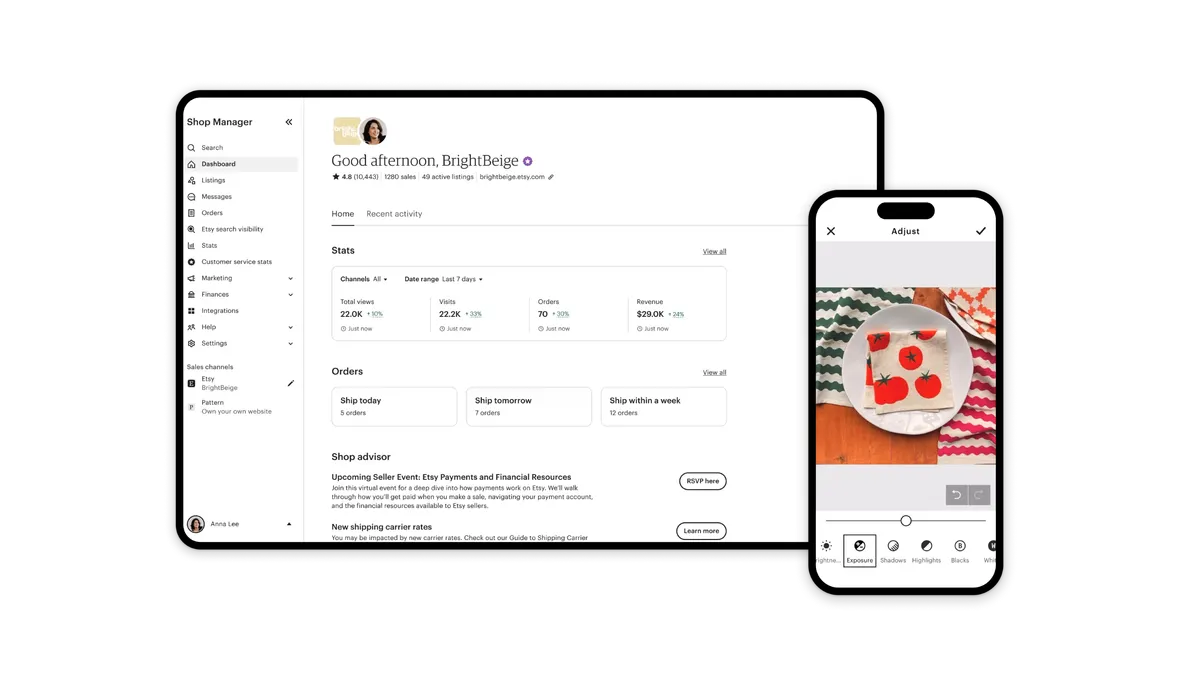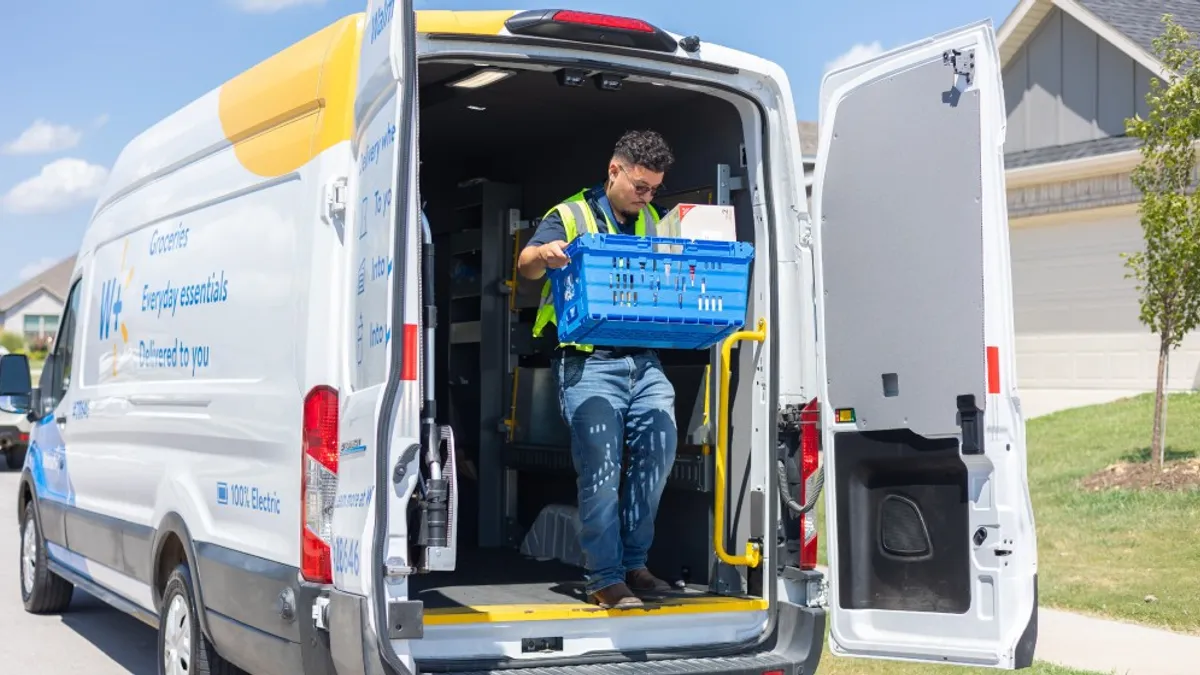After two years exploring generative AI use, Walmart has embedded the technology across workflows, honing its deployment strategy and expanding the toolkit for associates and developers in the process.
“In 2023, we were like ‘we want to go all in with AI,’ but we didn’t really know what that meant,” David Glick, senior vice president of enterprise business services at Walmart, told Retail Dive’s sister publication CIO Dive. “There was no enterprise ChatGPT or enterprise Gemini and the data privacy element was not where it needed to be.”
Finding the balance between innovation and risk is a tension enterprise leaders know all too well. But friction isn’t viewed as a bad thing, Walmart executives said. Instead, the back-and-forth between technologists, information security pros, legal and compliance counterparts keeps the company on the right track.

“We’re pushing and pulling every day," Glick said. "I’m negotiating [and] I’m working very hard to make AI approachable while our legal team and compliance team or InfoSec team are working very hard to make it safe. We spend a lot of time together, having direct and candid conversations.”
After all, no business wants to be in the news for a data privacy leak or AI-related fumble. But at the same time, executives see the value in pushing boundaries and being innovative.
“We need to make sure that what we put in the hands of our users will not get them in trouble and will not get the company in trouble,” Glick said. “We’ve made a lot of progress on it over the last year, but it’s going to be an ongoing saga.”
One of the improvements over the last year is an ML platform called Element, which offers teams visibility into cost, governance and responsible practices while enabling scale and speed.
“It allows only models that are compliant with our guidelines into production,” said Sravana Karnati, executive vice president of global technology platforms at Walmart. Guardrails also ensure privacy and information security standards are met.
As the company expanded developer access to coding assistance and completion tools in North America and India this year, the retailer has leaned on an existing multistage validation process as well as other guardrails to ensure accuracy and security standards are upheld.
Code is tested for accuracy, information security compliance and lineage, Karnati said. “We check for all those things before the code is in production, and that does not change with generative AI tools. Humans are always in the loop.”

AI-powered tools also work in the background to inspect code, identify potential problems and add comments when appropriate.
“We have created what we call a pipeline visualizer that allows developers to look at where the problems are with your deployment,” Karnati said. “Here, we also use generative AI to pinpoint what actually happened with the code, and the tool also suggests fixes.”
Walmart recently added AI agents to the expanding developer toolkit. One of the agents is specifically designed to identify accessibility gaps in code.
“We want to make sure that the services we put out on our e-commerce side are available for everybody to consume,” Karnati said. “Going back and retrofitting code that already exists and sifting through and identifying those gaps is a laborious and error-prone activity, so what better use case than that for an agent?”
Working with AI
As the AI toolkit expands, the experience of Walmart’s workers is evolving.
“We are seeing a huge step change in the way coding and software development is done — and not just as in generating the code, testing it, compiling it and deploying it, but it’s also our ability to run systems in production,” Karnati said.
Developers have had to adjust to AI being embedded into the workflows.
Gartner predicts around three-quarters software engineers will use AI-powered coding assistants by 2028. AI use will also drive an upskilling surge, impacting around 4 in 5 engineers as the technology reshapes workflows and job functions.
Expectations of software developers are on the rise, with many saying they feel pressure to deliver projects faster, according to a HackerRank report published last month. Developers have also voiced concerns about job security and development.
“You absolutely need a distribution of developers,” Karnati said. “Whether it is early career engineers, mid-level engineers, senior engineers: you need all of them.”
Walmart offers its developers access to its Global Tech Academy where they can interact with a number of training resources. The retailer also pairs senior engineers with early career engineers or those with different skill sets.
Technologists also connect with associates to help with prompt engineering and impart AI know-how.
“An engineer or data scientist or a savvy AI champion could go sit with you and say, ‘Here’s some of the problems where you might use it. Here’s some of the things it does well or doesn’t do well,’” Glick said.
The goal is for AI to be ubiquitous and for associates to use it daily as part of their work. To do that, leaders are working to break down barriers to adoption and increase access points.
“We’re throwing the doors wide open to generative AI,” Glick said.
























